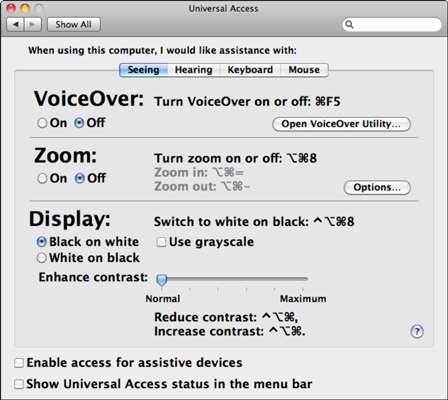
Users can adjust the screen reader parameters for their individual situation. Different commands allow users to navigate between and within web pages, like by headings, lists, or links. For many people with advanced vision loss, another assistive technology option is screen reader software, which converts the text on the screen into synthesized speech.Īll content needs to be built in a way that allows the screen reader to vocalize it: web pages, documents, spreadsheets, presentations, user interface text, and more.
MAC ENABLE ACCESS FOR ASSISTIVE DEVICE SOFTWARE
Screen magnification software is a good solution for some people with visual disabilities, but not others.
MAC ENABLE ACCESS FOR ASSISTIVE DEVICE ANDROID
Windows and Mac computers, as well as iOS and Android devices, all come with built-in screen magnification software. Screen magnifiers are one of the easiest assistive technologies to start using.

Screen magnifiers can work as a virtual magnifying glass, allowing the user to control which area of the screen receives focus.Ī few common features of screen magnification software are: Screen magnifiersįor people with low vision, screen magnification software enlarges the text and graphics on a computer screen or mobile device, often as large as 20 times the original size. The assistive technologies below are some of the most commonly used by people with visual disabilities. adults have some form of visual disability, from impairment to total blindness. The National Federation for the Blind estimates that roughly 3 percent of U.S. Assistive technology for visual disabilities This article will break down some of the different types of assistive technology based on the types of disabilities they may be most likely to help with. With so many different assistive technologies, it can be hard to know where to start. While the term “assistive technology” can apply to any device used to make tasks possible or easier ― such as wheelchairs and hearing aids ― this article will discuss only those assistive technologies used to supplement or replace computing devices. Fortunately, there are alternative methods that can help, known as assistive technologies, for using a computer or browsing the web.

For some people with various kinds of disabilities, standard computing technologies such as keyboards, monitors, and computer mice can be difficult or impossible to operate and to use to navigate the digital world.


 0 kommentar(er)
0 kommentar(er)
